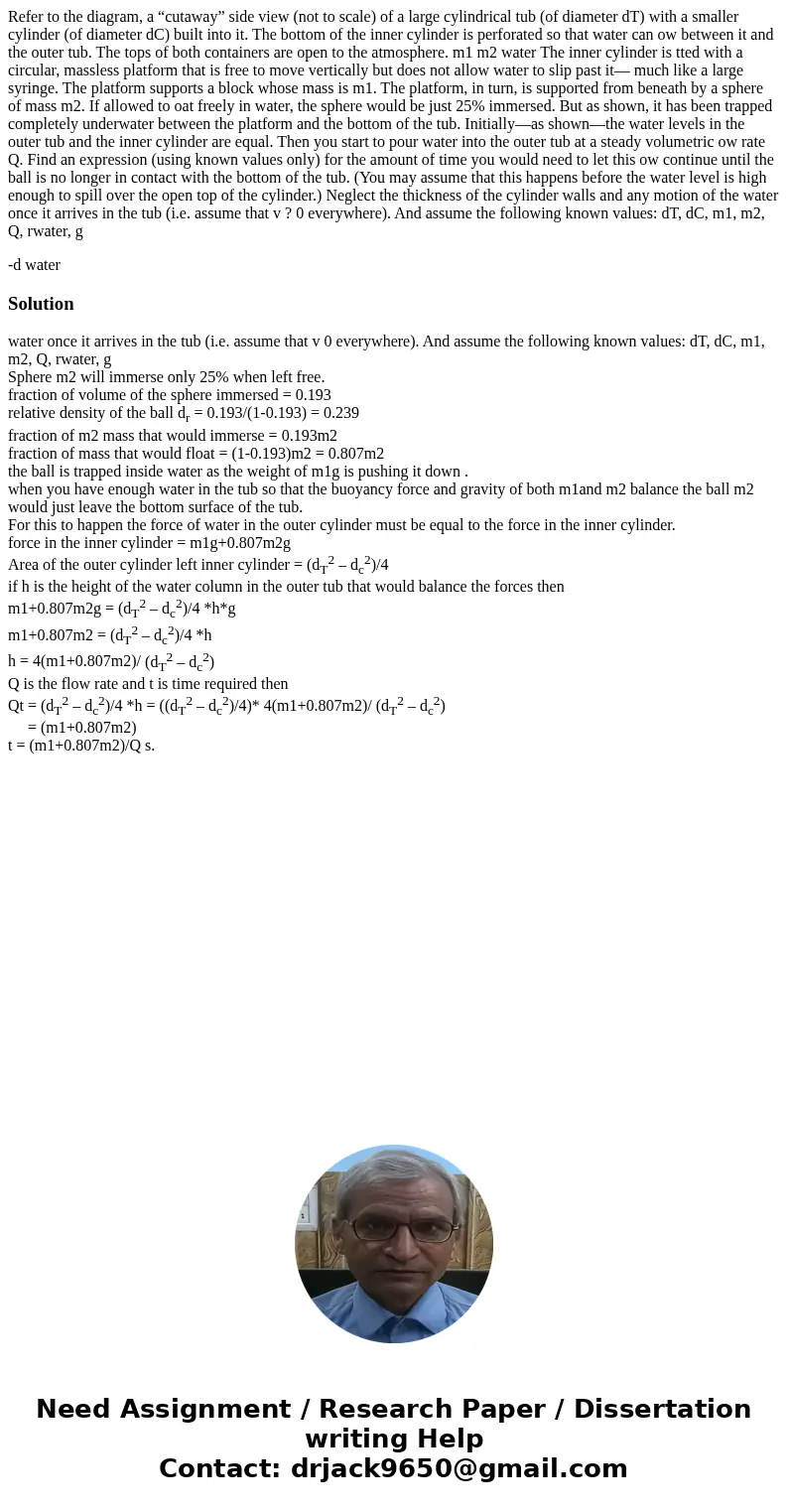Refer to the diagram a cutaway side view not to scale of a l
Refer to the diagram, a “cutaway” side view (not to scale) of a large cylindrical tub (of diameter dT) with a smaller cylinder (of diameter dC) built into it. The bottom of the inner cylinder is perforated so that water can ow between it and the outer tub. The tops of both containers are open to the atmosphere. m1 m2 water The inner cylinder is tted with a circular, massless platform that is free to move vertically but does not allow water to slip past it— much like a large syringe. The platform supports a block whose mass is m1. The platform, in turn, is supported from beneath by a sphere of mass m2. If allowed to oat freely in water, the sphere would be just 25% immersed. But as shown, it has been trapped completely underwater between the platform and the bottom of the tub. Initially—as shown—the water levels in the outer tub and the inner cylinder are equal. Then you start to pour water into the outer tub at a steady volumetric ow rate Q. Find an expression (using known values only) for the amount of time you would need to let this ow continue until the ball is no longer in contact with the bottom of the tub. (You may assume that this happens before the water level is high enough to spill over the open top of the cylinder.) Neglect the thickness of the cylinder walls and any motion of the water once it arrives in the tub (i.e. assume that v ? 0 everywhere). And assume the following known values: dT, dC, m1, m2, Q, rwater, g
-d waterSolution
water once it arrives in the tub (i.e. assume that v 0 everywhere). And assume the following known values: dT, dC, m1, m2, Q, rwater, g
Sphere m2 will immerse only 25% when left free.
fraction of volume of the sphere immersed = 0.193
relative density of the ball dr = 0.193/(1-0.193) = 0.239
fraction of m2 mass that would immerse = 0.193m2
fraction of mass that would float = (1-0.193)m2 = 0.807m2
the ball is trapped inside water as the weight of m1g is pushing it down .
when you have enough water in the tub so that the buoyancy force and gravity of both m1and m2 balance the ball m2 would just leave the bottom surface of the tub.
For this to happen the force of water in the outer cylinder must be equal to the force in the inner cylinder.
force in the inner cylinder = m1g+0.807m2g
Area of the outer cylinder left inner cylinder = (dT2 – dc2)/4
if h is the height of the water column in the outer tub that would balance the forces then
m1+0.807m2g = (dT2 – dc2)/4 *h*g
m1+0.807m2 = (dT2 – dc2)/4 *h
h = 4(m1+0.807m2)/ (dT2 – dc2)
Q is the flow rate and t is time required then
Qt = (dT2 – dc2)/4 *h = ((dT2 – dc2)/4)* 4(m1+0.807m2)/ (dT2 – dc2)
= (m1+0.807m2)
t = (m1+0.807m2)/Q s.

 Homework Sourse
Homework Sourse